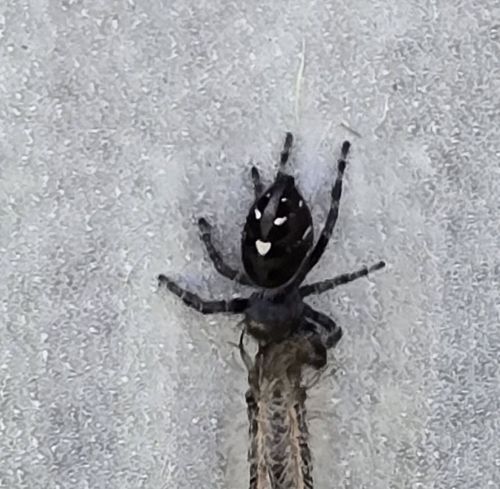Marbled Orb-weaver (juvenile) or a similar Orb-weaver species
Scientific Name: Araneus marmoreus (potentially, or another Araneidae species)
Order & Family: Araneae, Araneidae
Size: Female body: 5-15 mm; Male body: 3-8 mm. Juveniles are smaller.

Natural Habitat
Gardens, forests, fields, and urban areas where they can build webs between plants, structures, or along eaves.
Diet & Feeding
Mainly insects caught in their orb webs, such as flies, mosquitoes, moths, and other small flying or crawling insects.
Behavior Patterns
Orb-weavers are known for constructing intricate, circular webs (orb webs) to catch prey. They typically rebuild their webs daily, often at dusk. They are ambush predators, waiting in the hub or nearby for vibrations of trapped prey. The spider in the image appears to be consuming a prey item (possibly a dragonfly or damselfly based on the long body).
Risks & Benefits
Potential risks: Bites are rare and generally not considered medically significant for humans. Symptoms are typically mild, similar to a bee sting (localized pain, redness, swelling). Benefits: They are beneficial pest controllers, reducing populations of various insects, including some that are considered pests to crops or humans (e.g., mosquitoes, flies).
Identified on: 9/11/2025